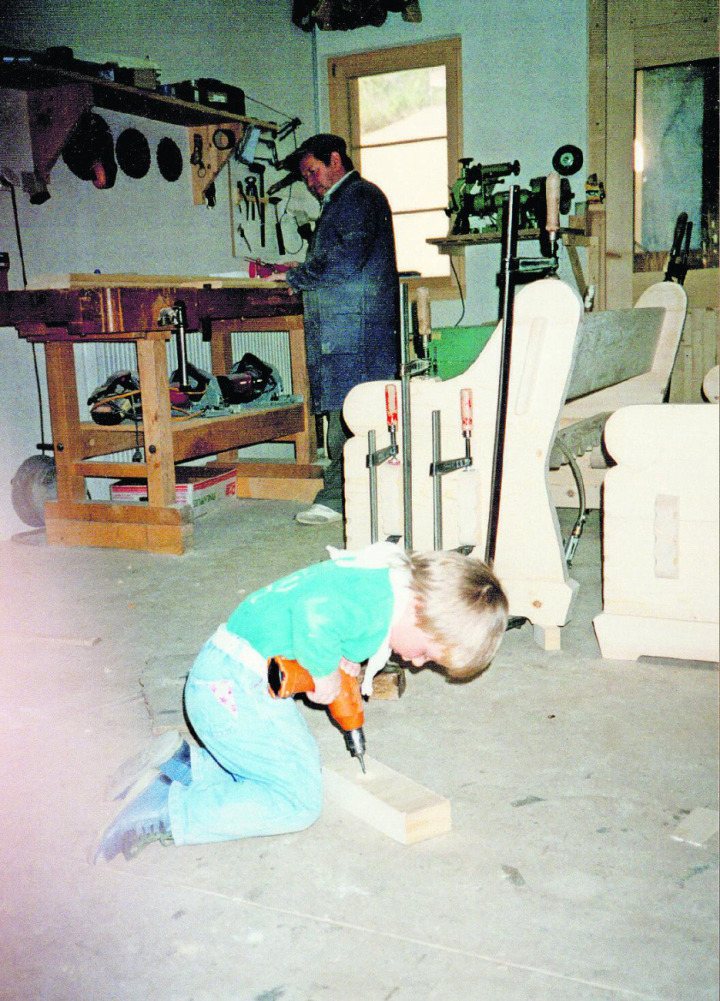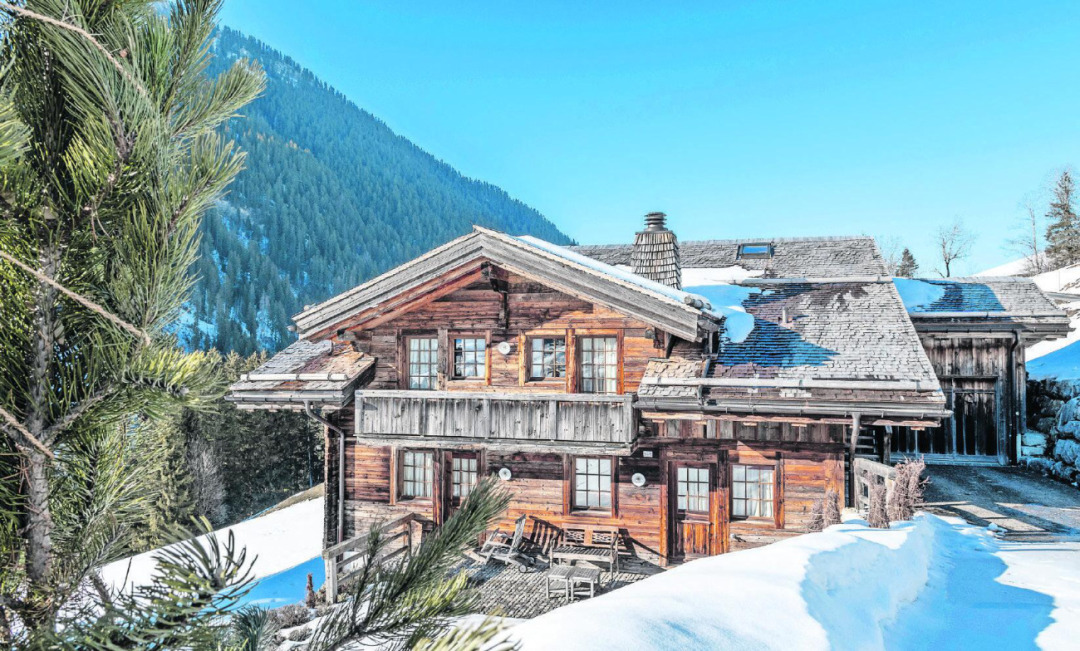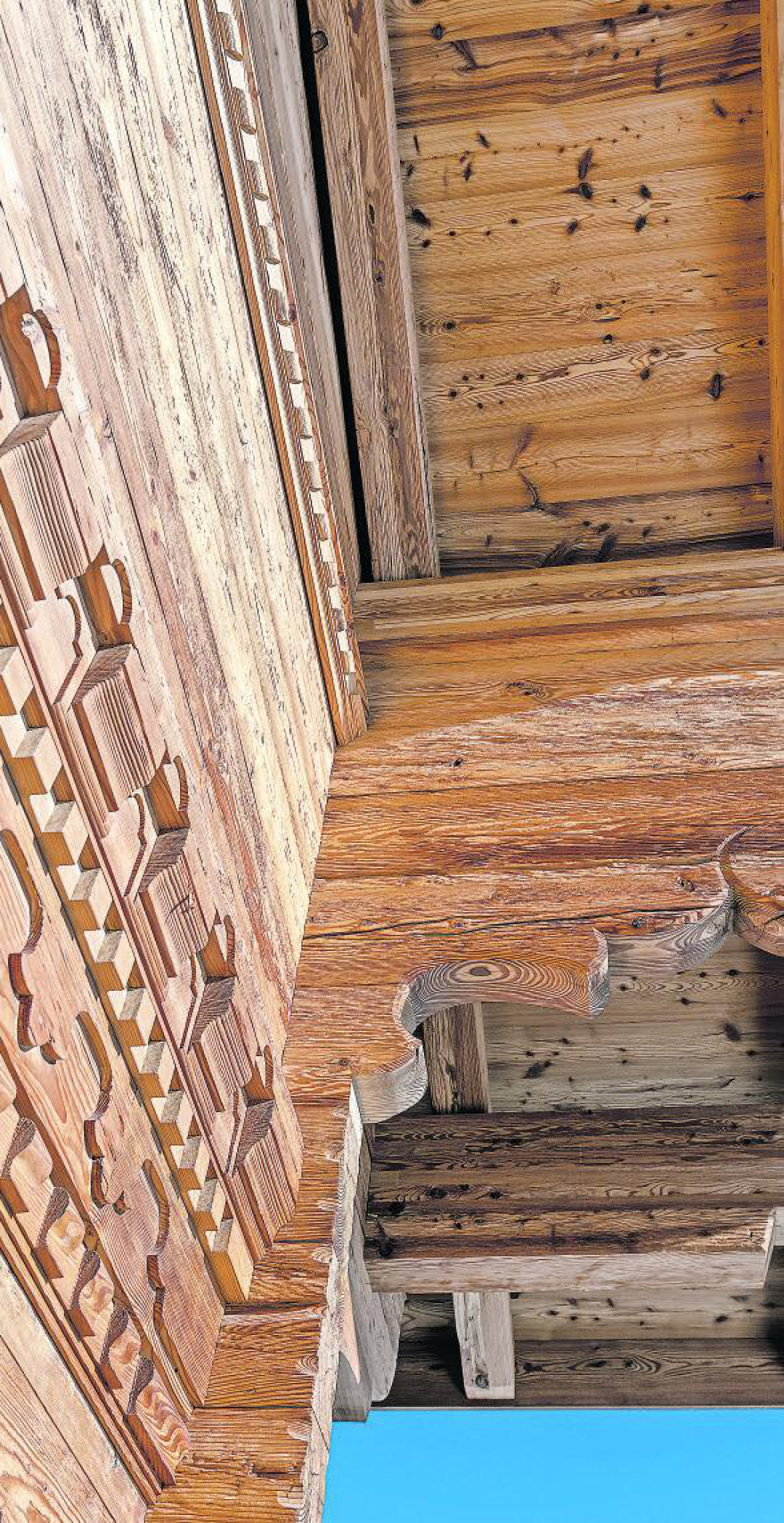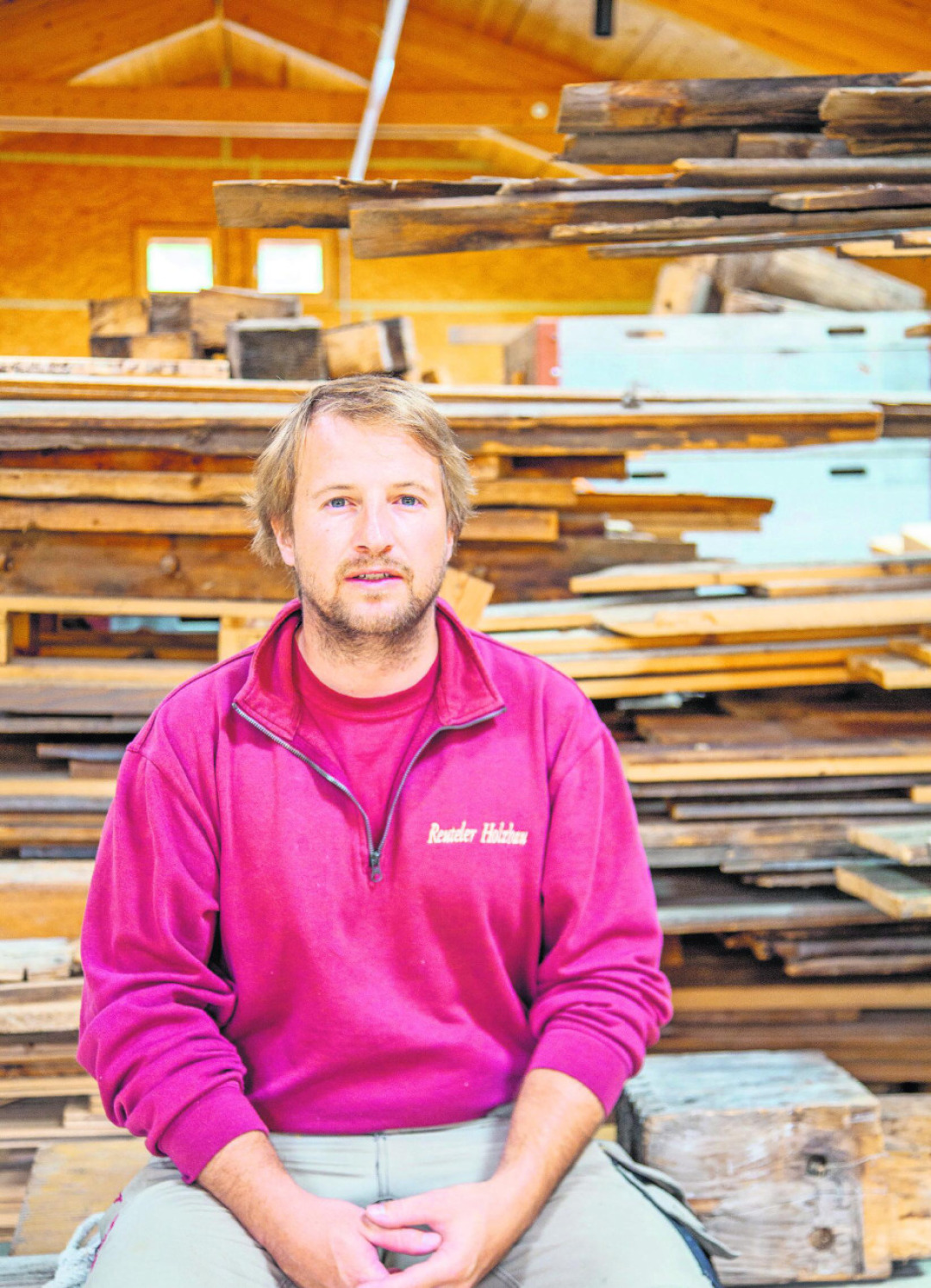Master Builder
30.07.2023 Profile, Architecture, Traditions, Profile, Magazine, Business, Local NewsSandro Reuteler is fourth-generation managing director of Arnold Reuteler Holzbau AG in Grund. Sandro carved time out of his busy schedule to meet with GstaadLife and talk tradition, technology and the importance of sustainability.
You are fourth-generation: ...
Sandro Reuteler is fourth-generation managing director of Arnold Reuteler Holzbau AG in Grund. Sandro carved time out of his busy schedule to meet with GstaadLife and talk tradition, technology and the importance of sustainability.
You are fourth-generation: what were the origins of the family business?
It all started with my great-grandfather, his toolbox and a workshop. That was it. He didn’t run a company; he worked by himself as an independent craftsman. He travelled around the region, taking on carpentry projects.
It was my grandfather who established the company. In 1963 he saw a chance to buy a plot of land in Grund – in fact, it’s where we’re still located – and constructed a building comprising a workshop below and living quarters above. When my grandfather handed over the reins to my father in 1988, there were ten employees.
My father continued to grow the company and by the time I took over in 2021, our team was three times the size. Although we’re still in the same location and live above the workshop, we’ve expanded our production site to two additional halls. This has grown our capacity to handle more and larger projects.
What does it mean to be involved in a family business?
It’s a real honour. It’s not every day you can say you’re the fourth-generation in the same business. I am very proud that my family has been able to achieve this.
It’s particularly special as we haven’t stood still. You can see this in the type of projects we deliver. We now offer a modern take on construction with new processes and machinery including CNC machines. This is where we use computer-controlled processes to cut and mill wood to size. This approach minimises waste and increases productivity and has really revolutionised the type of projects we can accept.
But while we fully embrace new technology, and I personally love these new modern processes, I’m especially proud we still have the skills for traditional construction – to create the typical Swiss chalet “look”. It’s how we contribute to the overall impact of the region. The Saanenland landscape is one of the reasons this region is so well-loved by locals and visitors alike.
Was it always expected that you would take over one day?
I was 32 when I took over in 2021, but the process started many years earlier. In fact, I trace it back to the time I spent with my grandfather.
Between the ages of four till about ten, my grandfather was like my best friend, and I loved nothing better than to work alongside him. We would make little block and shingle houses and I just loved it. I credit my grandfather with imparting a love of craftsmanship in me.
So it was a very natural process and with each passing year my desire to follow in my father and grandfather’s footsteps grew stronger and ultimately led to my deciding to study carpentry.
How did you prepare for the responsibility of running the company?
First, I completed an apprenticeship before qualifying as a technical specialist in wood construction and finally as a master carpenter. Then, I completed training focused on how to run a business and lead a company. Finally, I spent time in Lausanne to improve my language skills, as there are many international people in this region. It was very structured and worked well.
It’s funny, but while I enjoyed the opportunity to work and study outside of the Saanenland, most weekends, I returned home to Gstaad – especially in the winter. I mean, who would want to spend their winter weekends in a city when there is sun and snow here? Looking back, I see that my love for carpentry and my love for the Saanenland were building the life I have today.
You must feel some pressure being fourth-generation? How do you balance tradition with defining your vision for the future?
No, actually, the pressure isn’t that high because the handover from my father was very slow. My father worked alongside me for six years because that’s how he took over the reins from his father, and it was an approach that had worked well. But more than that, my father knows how it feels to take on the responsibility for a family company. He was very understanding. Also, even though he is no longer involved in the company (he’s working on projects of his own), he’s still around, and I know I can go to him with questions any time. It’s like a little bit of added security.
I would also say that having a lot of work has definitely made the transition easier. We have a mixture of projects requiring traditional techniques and modern approaches. It’s extremely exciting. I value the fact that construction in this region has to have a traditional look, but thanks to the company growth in my father’s time, our expanded workshop means we are now able to do things like prefabricate different construction elements – such as the frame and even whole walls. In fact, we’re the only company in the Saanenland that can handle such large pieces concerning prefabrication. This is hugely beneficial because it means we can continue working even when the weather is too poor to be on-site and save time on construction at the same time.
How do you separate family time from the business?
Hmm … I think when you have a family company it’s always going to be a bit mixed in together. We’re all working towards the same goal and when you consider that my brother works in the company as a carpenter and my wife also works alongside me each month to prepare the payroll, you’ll see it’s just not really possible to say: “now it’s home and now it’s work.” But I don’t really see this as a bad thing.
I have two young daughters, aged five and three and I sometimes take them around the site with me and let them hit some nails – simple things like that, just as I did when I was young. It’s lovely because I’m doing what I did with my father and grandfather … it feels like part of the tradition.
Sustainability is becoming increasingly important in construction. How do you address this?
We aim to use wood from the region as much as possible. This is one of the reasons why we own a forest and try to cut trees from it every year.
If it’s not possible to have wood from here, then we at least use Swiss wood. When you see how much forest we have in our country, it seems stupid to buy abroad. It can sometimes be more expensive than shipping it from abroad, but the difference isn’t material, and the delivery timelines are more predictable. Besides, our clients are interested in knowing where the wood for their chalets is sourced.
We also use solar energy to run our business and heat our premises with waste wood - so sustainability runs through everything we do.
What’s the biggest project you’ve worked on?
It depends on how you define “biggest”. We were a partner company on the large project that was the Hotel Ultima, but our biggest project in terms of construction elements was a large building comprising five apartments; that for sure was the biggest prefabrication project we have worked on. It was massive!
And the most fun project?
All new projects are fun. Whether a playhouse made of logs, a garden house with a rabbit hutch or even a three-storey chalet, every project is a new challenge, and that’s what I find fun.
How do you see the future of construction in the Saanenland?
It’s never easy to predict what’s going to happen, and there are a lot of external factors that I don’t control, but I certainly see things will continue to be busy for at least the next ten years. In fact, one positive consequence of Covid 19 was that more people got to experience the Saanenland in the summer, making our region more well-known beyond just the winter. This can only be a good thing for businesses like ours and the region as a whole.
What are your goals for 2023 and beyond?
I want to grow the company, expand our skills, evolve our work processes and team training because if we stand still, we will lose. I want us to use better materials, develop better processes and foster better connections so that we can become a fifth-generation family company.
To that end, we are keen to encourage new craftsmen and women into the industry. We are a young team (with an average age of 27) and currently have three apprentices training with us. We ensure they are supported and coached across the board and given opportunities to work independently. Last April, we also held a ‘trial day’ for school child ren to get a first-hand taste of carpentry and experience the fun and joy that comes from this profession. Through such leadership, we aim to be the employer of choice for those with a passion for carpentry.
Are there any hidden gems in the region that you would recommend seeing as a local? Something that isn’t typically mentioned in guidebooks?
Our forest at Loweliweg (between Grund and Feutersoey) is a very beautiful spot. There’s a very nice stream there and a fireplace for cooking. I also recommend the Meilesgrund. It’s so beautiful in autumn when the leaves turn orange and yellow.
We are so lucky to be living in one of the most beautiful regions in the world. Every time I return from being away, I am grateful for the peace of the Saanenland. I wouldn’t have it any other way.
ANNA CHARLES
To learn more visit www.reuteler-holzbau.ch







